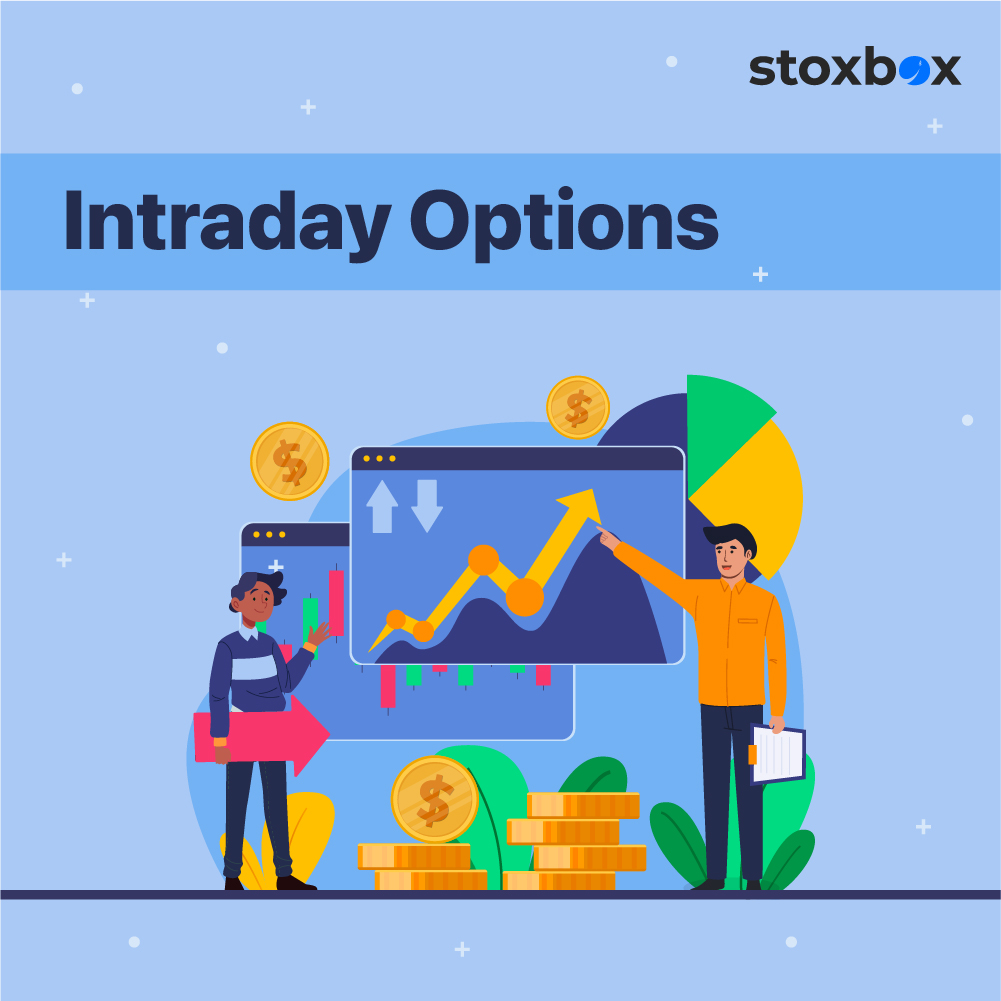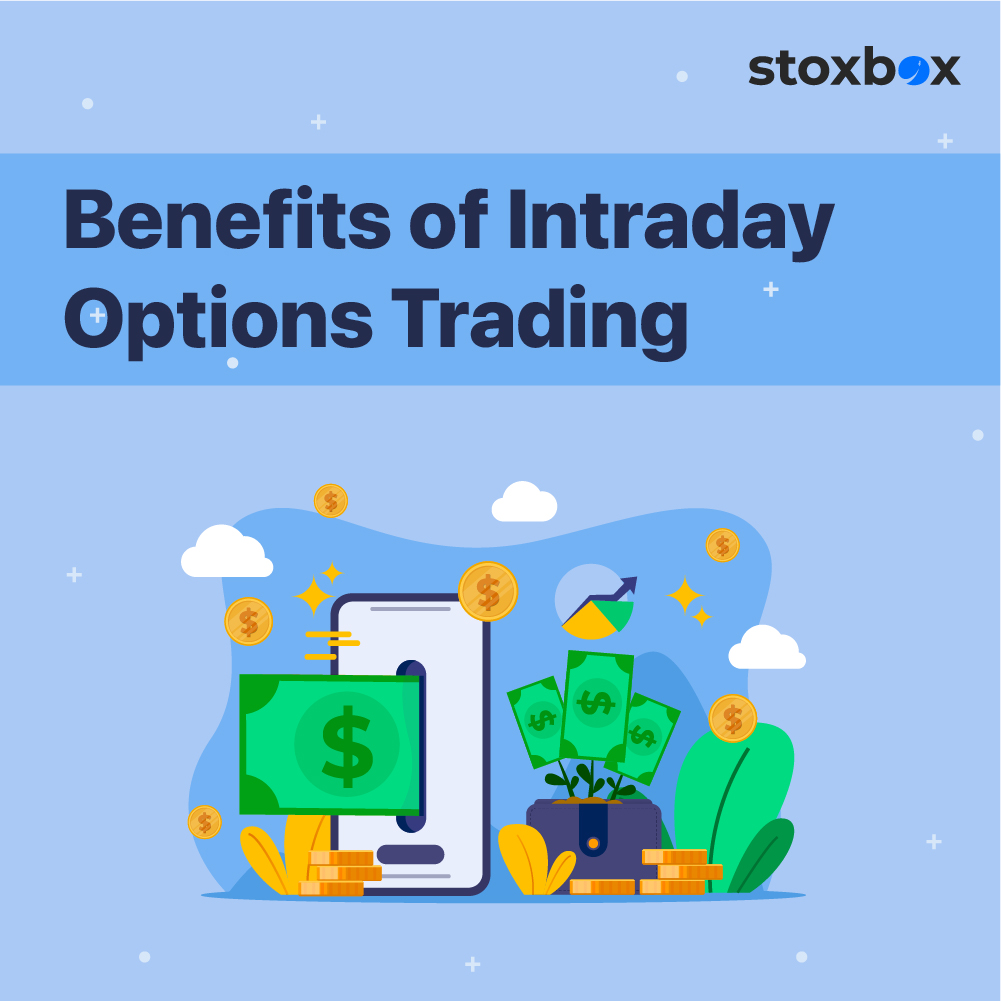Understand the concept of Intrady Options
Table of Contents
Everything I Need to Know About Intraday Options
Every investor has a different profile – from your financial goals to risk appetite and market strategy, your choices set you apart from the other players in the arena. And given the huge variety of securities and variables at play, there is something suitable for every requirement, as long as you know where to look. Based on your return requirements and time horizon, as well as your readiness to tolerate risk, you can pick and choose from a plethora of investing variants, from sovereign debt for the risk averse, to intraday trading and cryptocurrency for the high risk investor. If you have been wondering about your intraday trading possibilities, let us take a look at some of the popular alternatives.
Intraday Trading

Unlike long-term investors who choose fundamentally strong stocks and stay invested over a duration of several years to earn returns, intraday traders look for quick profit. If you are keen on the latter, the most common choices include derivatives such as intraday futures, intraday forwards, and intraday options. Futures and forwards are similar in concept, except for the fact that forwards are private and customisable agreements between two parties and futures are standardised and trade on exchanges. Both these derivatives feature pre-decided agreements between parties, wherein there is a commitment to buy or sell the underlying asset at a pre-decided price, on a pre-determined date.
For example, as a trader, you may agree to buy 5000 shares of Zomato from trader Y tomorrow, at 72 rupees per piece. Currently the price of a Zomato share is around 70 rupees. This contract comes into play because you believe that Zomato’s price will rise above 74 tomorrow, while trader Y believes that the prices will fall below 70. Both of you have a chance of making huge gains, if your prediction comes true. And that is the allure of intraday trading.
Intraday Options

Intraday options function on the same concept as futures and forwards, except for one major difference. While both futures and forwards consist of an obligation to honour the trade on the date of settlement, intraday options offer you the option of avoiding the trade. Here, you have the right, but not the obligation, to go through with the trade at the time of settlement, therefore affording you protection from market volatility. Under intraday options, there are two things you must know – put and call. If you are the buying party and you choose the call option, then you have the option of buying the security before the pre-decided date, no matter what the seller wishes to do. And, if you pick the put option, as a seller, you have the right to sell the security before the pre-decided date, at the pre-determined price, even if the buyer is no longer keen on the trade. These options help you mitigate risk and act as a hedging mechanism in case your predictions fail.
Benefits of Intraday Options Trading

You must note here that options are a trading call, not a long-term strategy. If you are a regular trader, there are various benefits you can gain from intraday options. Firstly, you need not build overnight exposure, thus protecting yourself from unexpected volatility. Secondly, you end up making gains when markets fall during intraday trade, as your position is based on market fluctuation. You can also make margin gains and, if you are an experienced trader, you can also use technical analysis and read the market sentiment to earn huge profits in just a day. If you are a professional trader, you can choose intraday options as a way to earn a regular income, wherein the sky could be the limit in terms of your capacity to earn profits. Finally, choosing intraday options instead of futures or forwards will allow you to limit your downside as you have the option to not complete the trade if the market ends up disappointing you.
Strategies for Intraday Options Trading
If you are keen on intraday options trading, you can pursue a variety of popular strategies, first among them being the momentum trading strategy. This strategy involves analysing the market and noticing the direction of the momentum – if you notice the beginning of a strong movement in the market, and build positions accordingly, you could beat the market and profit by betting against people who did not notice the upcoming change. This strategy needs you to be agile and fast on your feet, while also taking on considerable risk in the quest for higher rewards. Separately, you could go against the trend and try the reverse trading strategy but choose this method only if you are an experienced trader. Herein, you must correctly identify the daily lows and highs of the stock and place your bets in line with these possibilities. For instance, if you expect the shares of Zomato to drop to an intraday low of 65, and move up to 73 towards the end of the day, you can bet against the flow and end up making huge returns when your prediction is successful.
Intraday options are a great way to earn money, but only when you understand the market and know what you are doing. If you are a beginner, it is better to stick to simple strategies and move up the ladder as you gain more experience.
You might also Like.
No posts found!
